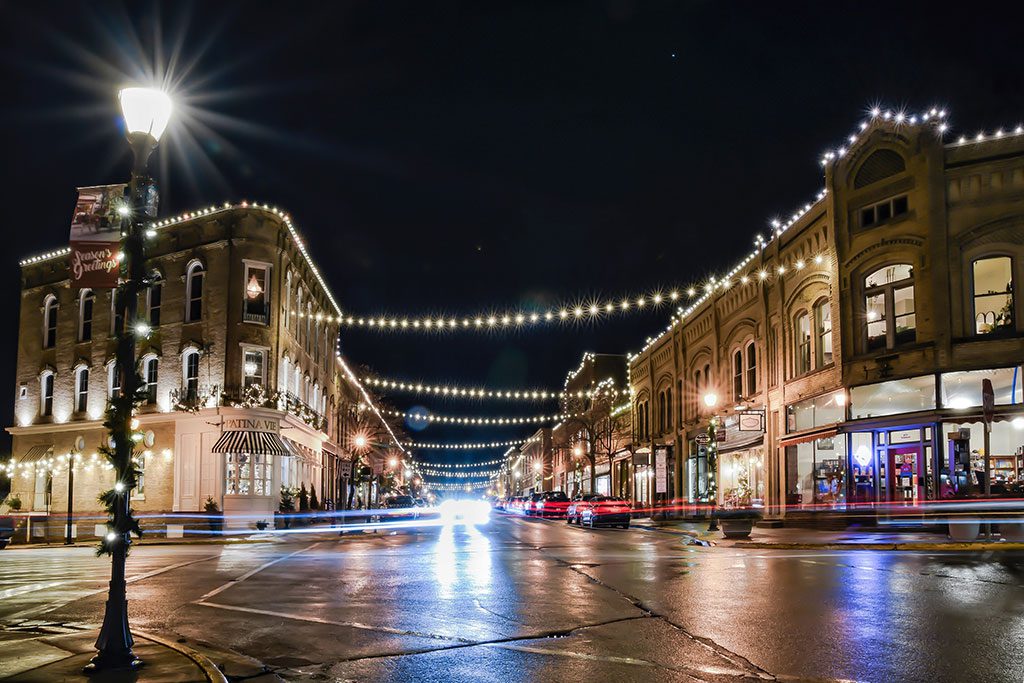
Downtown Ripon incorporates numerous types of lighting to make visitors feel welcome. Photo credit: Craig Tebon
Effective lighting design can transform a downtown business district
In June, Wisconsin Main Street had the pleasure of welcoming Seanette Corkill of Frontdoor Back, a Washington-based design consulting firm, to lead an interactive workshop to help participants understand the impact that effective district and business lighting can have on the visitor experience.
Since the bulk of consumer spending happens in the evening, when the workday ends, and darkness sets in early during the winter months, a well-lit district can help attract customers. Providing a safe and comfortable place to walk increases the likelihood that downtown residents and visitors will explore more of the district and patronize new businesses. In many ways, a well-lit business district is a true sign of downtown vibrancy as shops with light spilling out onto the sidewalk present a warm and inviting scene.
Downtown advocates looking to enhance evening foot traffic should start by assessing the existing nighttime landscape. According to Frontdoor Back, there are six basic “layers of light” that help visitors navigate a business district and make them feel welcome. They are: ridgeline, architectural, signage, pathway, entryway and window display lighting. Together, these layers create an enjoyable nighttime experience. If your initial audit finds many areas lacking, it isn’t necessary to change everything all at once. Simply start by adding the type of lighting with the greatest opportunity to make an impact. For instance, an upcoming construction project might provide an opportunity to improve street and pedestrian lighting, or a façade loan or grant program might be adapted to incentivize businesses to enhance their window and signage lighting.
Ridgeline lighting
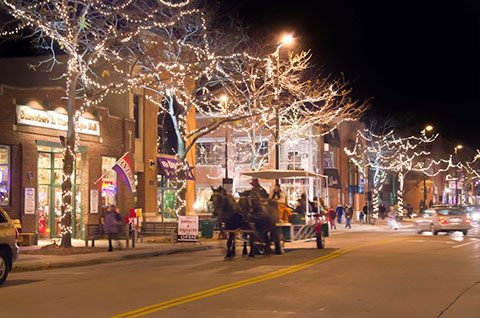
Wrapped trees clearly define the edges of Green Bay’s On Broadway district.
This lighting defines the boundaries of the business district. Similar to gateway features in the daytime, lighting that is starts and stops at the edge of the district can let visitors know when they’ve arrived and can also help them understand the scale of the district even when they can’t see all of it.
How to implement: While most ridgeline lighting will feature large bulbs at regular intervals along the skyline of downtown buildings, in districts without significant rooflines, gaps between buildings or other limitations, a similar effect can be created by lighting tree trunks or branches or by wrapping streetlights or other vertical elements.
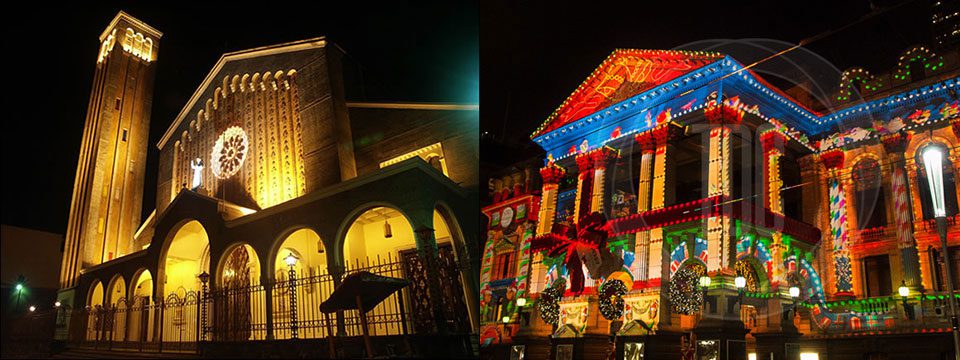
Architectural lighting draws attention to unique architecture, making it stand out even at night. Using LED bulbs also allows owners to change the colors seasonally to add a festive element.
Architectural lighting
If buildings have unique architectural features or are historically significant, façade lighting can spotlight or play up these features, helping visitors identify iconic places they might visit during the daytime and illustrating the unique elements of a community.
How to implement: Not every building has significant features or history, but highlighting those that do creates focal points and helps tell the architectural story of the district. This can be accomplished by installing floodlights on the ground, sconces on the wall or spotlights on towers or specific features.
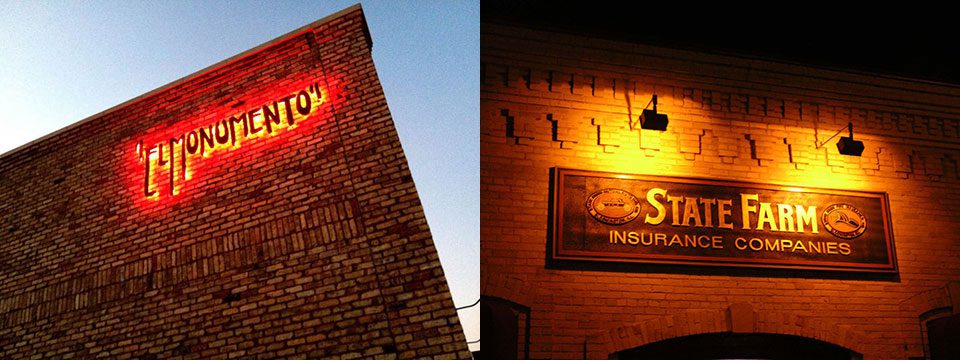
Here are two different ways of clearly identifying businesses at night that also convey the image of the tenants.
Signage lighting
Generally speaking, if a business has a sign, it should be lit. Even if a business is closed, the ability to read business signs is helpful for visitors to orient themselves and navigate the district and to understand the mix of business options available for future visits, even if not all are open in the evening.
How to implement: Light should be directed at signs and not creep into other spaces. Gooseneck lights and angled shades are an effective way to achieve this effect. Lights should be spaced closely together so the cones of light produced are overlapping to fully illuminate the sign.
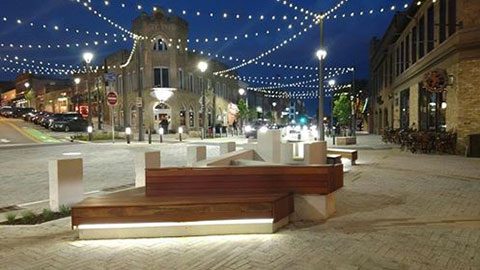
Lit bollards and other streetscape elements clearly define the pedestrian area and provide a well-lit path to follow.
Pathway lighting
Pathway lighting includes various forms of pedestrian lighting that brighten pedestrian spaces, providing safe paths that make it easy to navigate the district. These paths generally focus on connecting key destinations such as parking lots, hotels or residential neighborhoods within the downtown core.
How to implement: Pathway lighting should provide a wash of light, not spotlights or safety lights, which actually make a place appear unsafe rather than welcoming. (Overly bright lights indicate to the visitor that the space is unsafe enough to need additional security.) The light should also be concentrated on the pedestrian area to create a path, rather than trying to light an entire street or parking lot. Sconce lighting, gooseneck lights with flat shades, lights mounted under awnings or illuminated streetscape elements are all viable options.
Entryway lighting
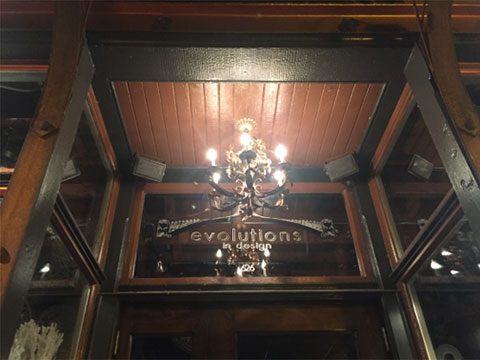
Entrance fixtures that are pedestrian scale and shield the viewer from light are preferred. As a bonus, entrance lights can reinforce a business’s unique style.
Lighting at the entrance to a business helps define the physical entryway, providing a beacon to visitors and illuminating key information such as website and store hours during times when the business is closed. This lighting also creates a safe environment for employees when they enter or leave the business.
How to implement: Since these lights tend to be in close proximity to people, choosing the appropriate light bulb is important. Bulbs should be shielded within the fixture so they are not directly visible to pedestrians, ideally with a flush mount or flat front bulb.
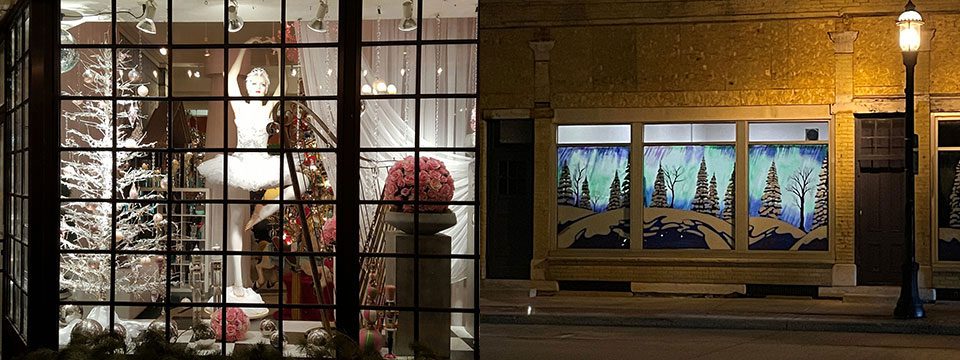
By spotlighting certain elements within the window, this lighting creates visual interest and texture, encouraging the viewer to examine products more closely. Lighting art within a window allows even vacant spaces to contribute to a positive nighttime experience.
Window display lighting
While the first five lighting categories centered around outdoor lighting, window display lighting focuses on elements inside the district’s businesses, visible from the sidewalk. Strong districts are made of strong stores, and strong stores show what they sell. Even when businesses are closed, having lit storefronts creates visual interest and allows for window shopping, sometimes literally, through the use of QR codes or text-to-purchase signage.
How to implement: In retail spaces, storefront lighting should be located close to the glass and spaced 18-24 inches apart for flexibility. Lights should shine back into the window area (rather than into the eyes of pedestrians) and spotlight individual items of merchandise being displayed, creating contrast and visual interest. For service firms, having interior lights highlighting an accent wall or reception desk with the firm’s logo can convey the image of the business and contribute to the district’s vitality in the evening. Window lights are often on timers, turning off after restaurant or theater traffic has ceased for the night.
If your initial audit finds that public sector lighting already functions well, or your municipality isn’t able to implement lighting changes anytime soon, helping your businesses to up their interior lighting game is an effective strategy that can boost overall foot traffic and revenues for individual businesses. In past Main Street Makeover projects, simply adding focused lighting on specific merchandise has resulted in significant increases in sales of those items. Even in a generally well-lit store, having focused lighting can draw the customer’s eye to individual items and make them look more appealing.
For businesses hoping to improve their interior fixtures, the following tips are useful:
- Choose lighting fixtures that suit the space. High ceilings combined with fluorescent lights will not create a cozy atmosphere for shoppers, but adding additional pendant and/or tabletop lighting will make customers feel more at home. Track lighting around the perimeter of the store allows for focused lighting directed at changing displays with maximum flexibility as merchandise changes.
- Choose the appropriate color tone. It may seem natural to choose bulbs labeled as ”daylight” since natural light is the most flattering. However, bulbs marketed as daylight hue produce very cool light, which tends to wash out colors and is generally less inviting than warmer tones. For best results in merchandising products, reference the Kelvin number which will be indicated on the back of the box of bulbs, and look for ratings of 2,700 to 3,000.
- Choose the right bulbs. Bulbs for home lamps are known as omnidirectional, meaning they push light in all directions. This is great for lighting a living room, but not as good for showcasing individual products. Flat face bulbs, also known as par bulbs, especially those with a Par 20-40 value, have an appropriate light radius for merchandising, providing focused light that can be directed to the area where it is needed.
- Make room for personality. Fun accent lights can help reinforce your brand, whether in the form of chandeliers in the changing area, funky pendants over the checkout counter, entrance lighting features or even neon accents.
These improvements can be costly. Fixtures and electrician fees to build out a comprehensive storefront lighting plan can easily cost $10,000, making these projects eligible for loan and grant programs that can make the upgrades more affordable. Existing businesses may choose to start with improvements in a single area that is easiest to address and add on as funds are available. In these cases, priorities to focus on include storefront lighting, followed by lighting on the rear wall or prettiest wall in the store.
The following links provide additional visual examples of the impact of lighting changes, as well as regulatory language to make quality lighting the default for future public improvement projects or developments:
- Video examples showing the impact of quality lighting enhancements in the public realm on Instagram and Facebook
- Denver street lighting design guidelines
- Dark sky ordinance language
